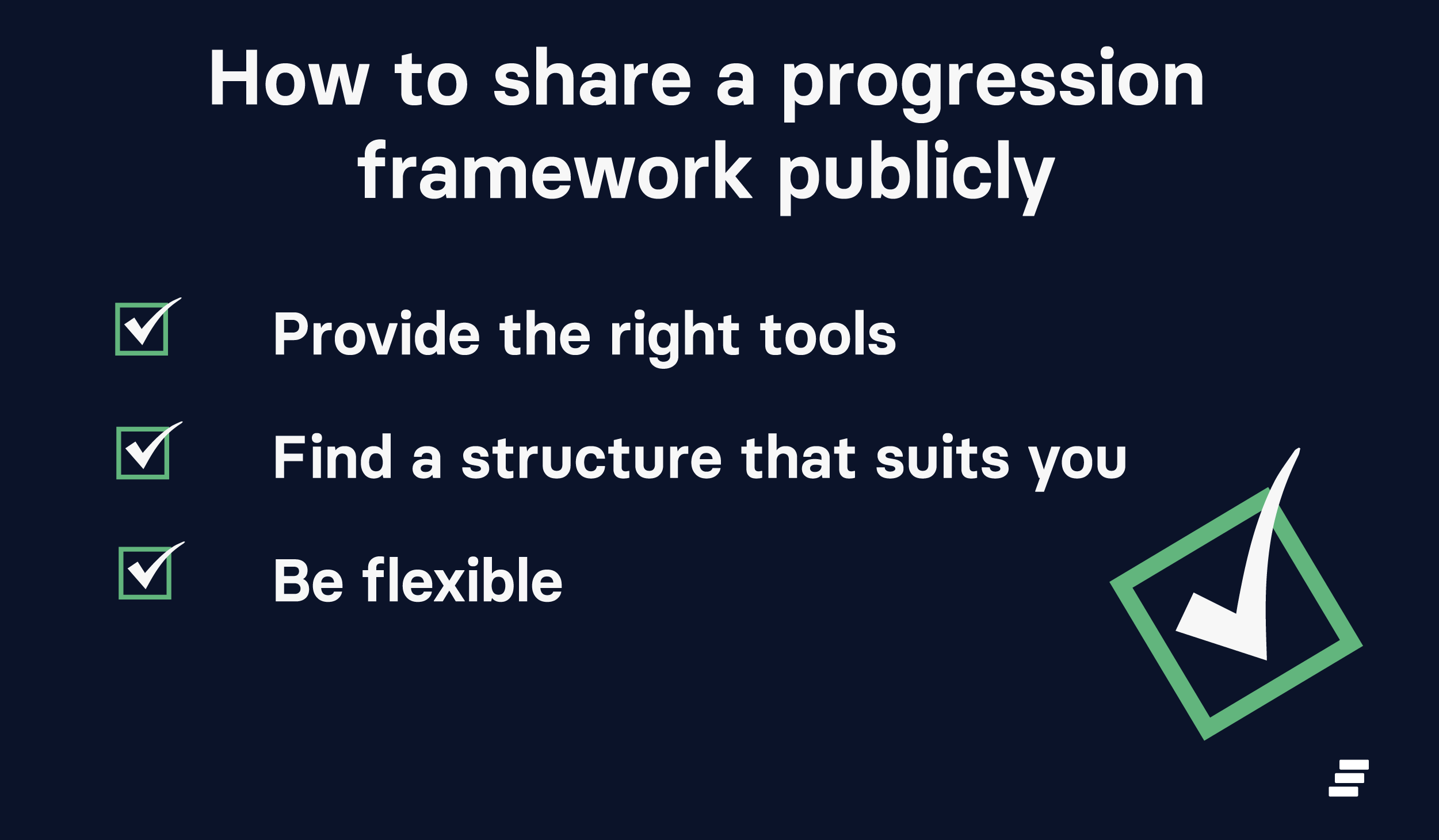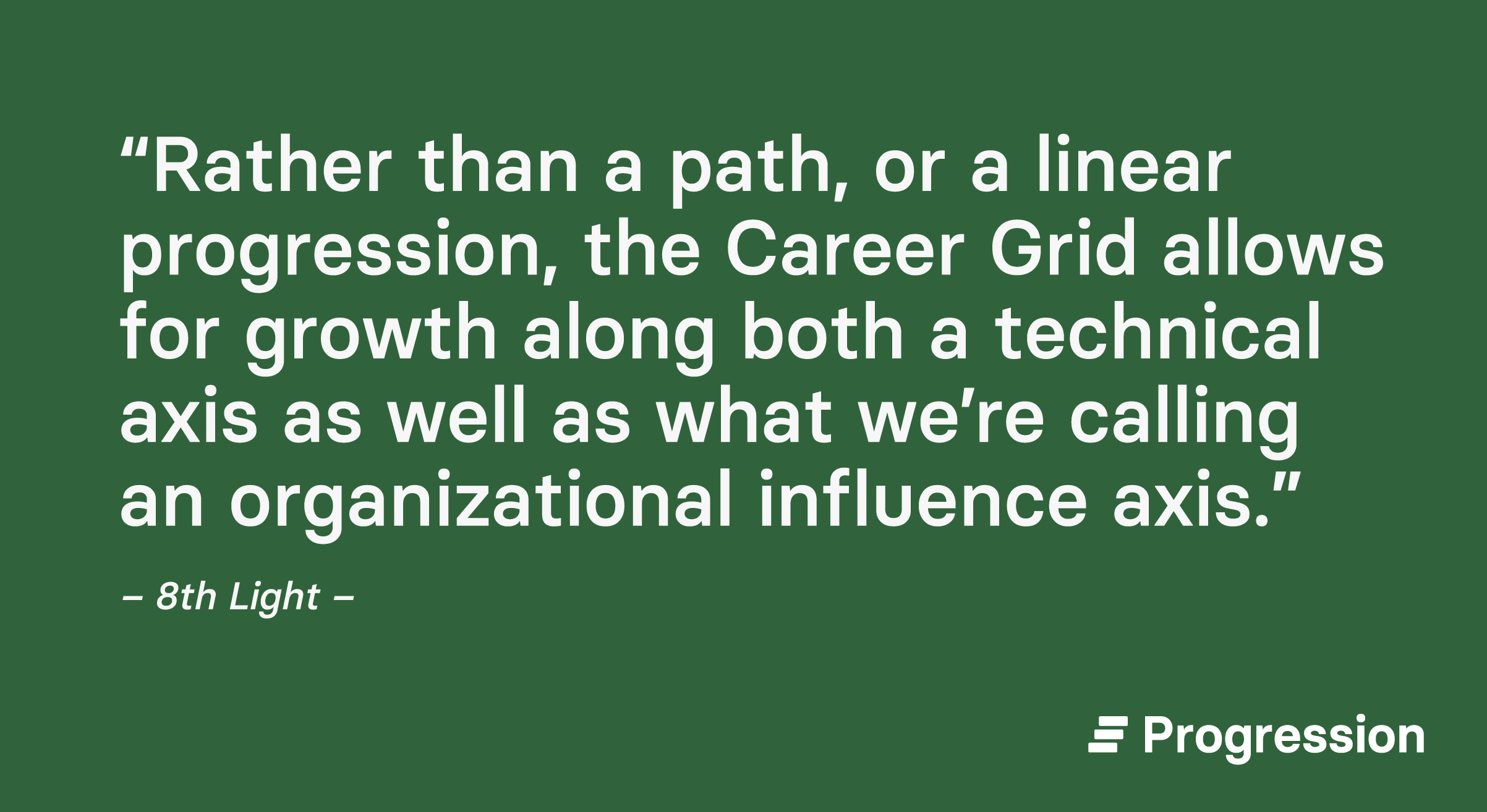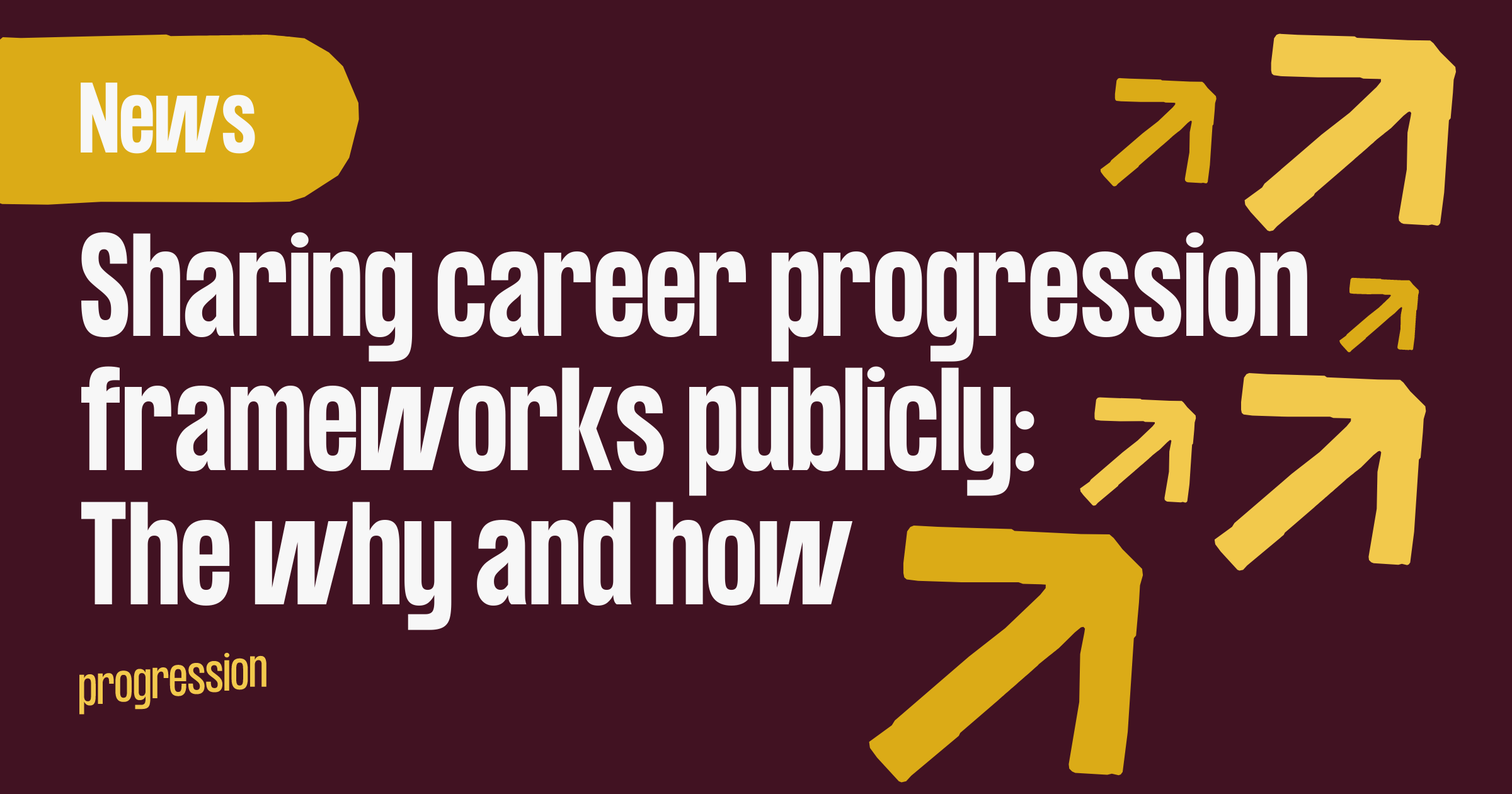Creating a career progression framework for your organisation may seem like a daunting task. Career progression is essentially an employee’s workplace journey and all the steps they take to improve in whichever direction they choose. When we refer to ‘framework,’ we mean the thoughtfully designed tool to organise and strategise employees’ career progression in a way that is accessible to all.
Although having a framework in place is great for strategic business and workforce planning, a progression framework should benefit your employees too. A successful framework should be seen as a platform to help employees’ career journeys – not another scary system for management to monitor them.
When a career progression framework helps meet both employer and employee needs, growth will follow. Let’s take a deeper dive into why having a framework is great for organisational growth.
Why is having a framework great for your organisation?
Making things clear
A framework can be used to show what is needed to perform the work today, what is required to grow in future and what avenues are available for employees. This can improve employee’s performance by giving them goals to work towards as well as strengthening their loyalty and employee-employer relationship. Having a framework in place also means you can make precise investments in your employees’ talent, making the most out of their potential.
Delineating expectations
A framework can be used to help delineate expectations. What this means is challenging the idea of a linear career progression, or ‘moving up the ladder.’ A framework helps show employees that there are multiple pathways their career journey can take. It will also ensure that employees can understand their opportunities and will cut out any surprises when it comes to taking the next steps, such as assessments or specialised training.
Having more control
Instead of sitting back and seeing where your talented team ends up, you can have more control over your teams’ journey. You’ll be able to monitor everyone’s progress and envision future departments, or even anticipate new roles in future.
Highlighting employee value proposition (EVP)
Your top talent is going to be career savvy – they want to know how joining your organisation will help their career journey. An employee value proposition is a way of showing your top talent the advancement paths available for them. An EVP ensures candidates that you’re invested in their progression and have a framework in place for them to grow.
The benefits are evident, so if you’re going to the trouble of creating a framework for your organisation, why not display your framework with pride?
Why share your progression framework publicly?
There are several advantages to sharing your framework publicly, as sharing this means existing and potential employees can see your organisation takes progression seriously.
Create a platform for communication and feedback
Having a framework in place that employees can access means there is complete transparency, which helps create a ‘we’ relationship. As in ‘we’ will be finding ways to grow and develop together as a team. Having career development options publicly available is also a great way of gaining feedback from your team and pinpointing any areas for improvement. This will make it easier to track talent gaps and career growth opportunities that can help with delivering on business strategies.
Create a rewards system
A public framework will help provide infrastructure for an effective rewards system in a transparent, straightforward way. If everyone can see everyone’s progression, it will be easier to negotiate or agree on things such as rewards and promotions. Having this kind of structured reward system will motivate your employees instead of dangling vague ideas in front of them with no real results.
Show you take it seriously
Both potential and current employees can use your public framework to see your organisation takes career progression seriously. Having a framework publicly available could also entice top candidates that are looking for an employer invested in their career journey.
Create a public platform
If you’re looking to maximise communication and transparency between employer and employee, you can use your public progression framework as a platform for communication. You’ll be able to track achievements of employees and work together to set new goals, all in one centralised platform. From an admin perspective, having a public platform will prevent employees progression goals getting lost in email chains, or having dozens of time-consuming meetings.
Best practices for sharing your framework publicly

Here are some tips for making the most out of your organisation’s public framework.
Provide the right tools
It’s important to give your employees access to the right tools. If you’re helping connect employees with development opportunities, you’ll be more successful if you give them tools to track their progression easily. You don’t want your employees to feel as if you have added more work to the pile. Tracking their career progression should be as easy as checking their inbox.
Find a structure that suits you
Every organisation is different, so every career progression framework should have a different structure. For example, the company 8th light uses a ‘career grid’ to structure their progression framework. They say:

In other words, they came up with two key ways they want to see their team grow and so they streamlined their process and made it easy for employees to follow.
Be flexible
We’ve mentioned the importance of feedback in the tracking of career progression, so it makes sense to dedicate a space in your framework for dialogue between employer and employee. Another way of making sure feedback is taken onboard is making it adaptable. There should be room in your structure for you to act on employee feedback and to help keep the process transparent.
Additionally, flexibility means leaving room to adapt for the future. As the workplace continues to evolve, you may not yet be able to tell which skills will no longer be needed in years to come.
You can help employees avoid locking into rigid career paths by leaving room to develop a more diverse portfolio of skills. You can also use this to help fit the needs your organisation may have in future, without having to change your employee structure. This flexibility and visible room for growth will give employees something to look forward to and will likely promote use of the framework.
Taking the time and effort to create a detailed career progression framework for your organisation is one thing, but allowing it to be publicly accessible will maximise the benefits for everyone. If you’re not sure where to get started, progression.fyi has some great examples of public and open source frameworks and career pathways.
Take some time to develop a career progression framework that’s accessible and transparent and treat it as a platform for both employer and employee. Progression can help you create a public framework tailored to your organisation's needs and provide a structure that suits you to a tee. Display your company’s progression framework with pride!










 Sign up with Google
Sign up with Google  Sign up with Email
Sign up with Email